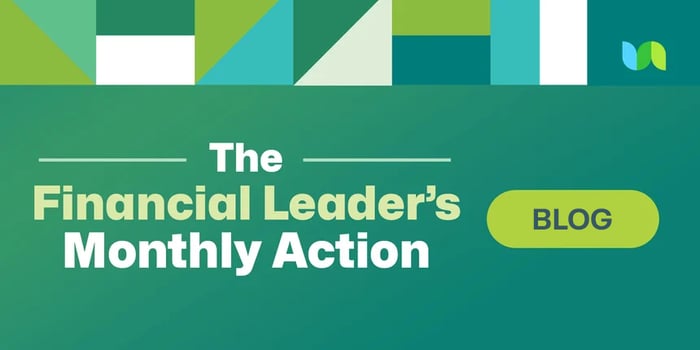The Financial Leader’s Monthly Action Plan: Write proposals that win
You can’t land new contracts without creating engaging proposals that convert.

We’ve released an eBook titled “The Financial Leader’s Monthly Action Plan.” Each month, we are posting excerpts here on our blog. For the month of March, the theme is “Write proposals that win.”
The ability to craft a personalized and relevant response to an RFP can be the difference between getting a contract or not. The key is to listen to your customers, anticipate their needs, and show you have what it takes to get them across the finish line. .
7-step guide for writing winning proposals
Here's a seven step-by-step guide to creating a winning proposal that stands out in the competitive arena.
1. Make effective bid/no-bid decisions
Before diving into the intricacies of a proposal, establish a robust process for bid/no-bid decisions. Utilize scoring systems, set clear goals, and conduct thorough reviews to channel your efforts toward the most promising opportunities. Embrace the idea of declining bids when the fit isn't optimal, employing a SWOT analysis for a well-informed decision-making approach.
2. Research and influence the opportunity
Research wins proposals. Get out there, talk to government customers, and find out what they need to accomplish their mission. Be efficient by targeting projects that are a good fit for your offerings. And if the probability of winning isn’t in your favor, move on.
At the same time, don’t be afraid to push back on RFP requirements during the draft process. Try to amend the language and requirements toward your strengths and downplay areas where you’re not the most experienced.
PRO TIP: It is a great idea to participate in “matchmaking” at industry events to meet directly with government procurement officials outside of normal settings.
3. Develop a sound win strategy
Comprehend how your solution aligns with the customer's needs and why your company is the ideal choice for success. Review the solicitation collaboratively with Green, Red, and Gold teams to cover all RFP areas effectively. A sound win strategy ensures that your proposal not only meets but exceeds the expectations outlined in the RFP.
4. Conduct a competitive analysis
Knowledge is power. Conduct an in-depth competitive analysis to gauge the likelihood of winning and assess the competition's strengths. Use this analysis to pinpoint areas where your company can offer distinctive value. Understanding the competitive landscape allows you to position your proposal uniquely and showcase your strengths.
5. Assemble a winning team
A winning proposal requires a winning team. Familiarize yourself with RFP requirements for selecting subcontractors and teaming partners. Explore collaborations with innovative companies that bring unique perspectives to the project. Avoid choosing partners who don't significantly enhance your proposal as they may become a burden and introduce potential areas of weakness.
6. Perform price to win analysis
Financial prudence is key. Consider your competition, RFP solutions, associated costs, and award criteria. Determine the price at which you anticipate winning the award. A meticulous Price-to-Win Analysis ensures that your proposal is not only competitive but also financially viable.
7. Support the proposal team
The final piece of the puzzle is a well-supported proposal team. Define roles and structure, ensuring everyone understands their responsibilities. If information is required from other departments, such as HR or subject matter experts, ensure they are informed and prepared. Secure management buy-in for the review timeline to streamline the proposal process.
Suggested resources
Become an expert at writing winning proposals by reviewing these resources:
- The Financial Leader’s Monthly Action Plan
- Leveraging Good Data for Growth - Blog
- Supercharge Proposals
- CRM for GovCon Overview
- The GAUGE Report